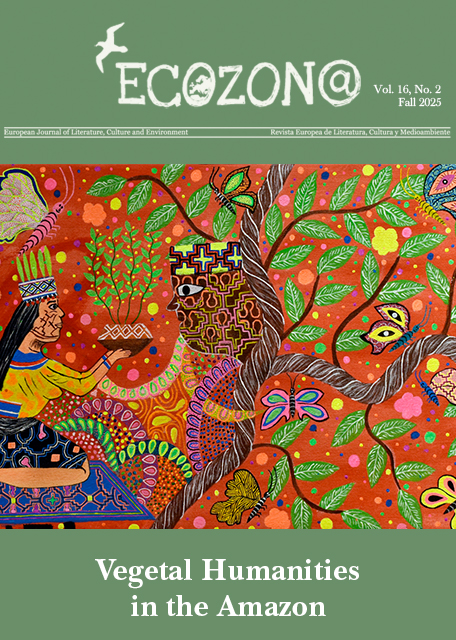<b>Saviors, "Sealfies," and Seals: Strategies for Self-Representation in Contemporary Inuit Films</b> // Salvadores, "sealfies" y focas: Estrategias de autorepresentación en películas inuit contemporáneas
DOI:
https://doi.org/10.37536/ECOZONA.2014.5.2.612Keywords:
Animal Rights, Inuit, Inupiat, "sealfie", self-representation, food security // derechos de los animales, inuit, inupiat, autorepresentación, seguridad alimentariaAbstract
The legibility of the inter-relationships between human and seal is what is at stake when Inuit present themselves within administrative discourses at international assemblies in defense of their ontology and the right to hunt seals. In the language of administration and in the narrative practices of international animal rights, seals can only appear in a predetermined categorical framework for what constitutes human ethical responsibility to nature. The seal in animal rights discourse is one type of object that needs saving in the form of protective measures to keep her safe from the rapacious greed of capitalism. However, in Indigenous cultural practices, the seal is another relative, a relation whose presence makes all certainties about hierarchies, use-value, moral exemptions, and human exceptionalism impossible. Using the trending social media phenomenon of the “sealfie” and three contemporary northern Indigenous films, this essay argues that the Inuit use of these media formats showcases their cultural and economic dependence on seal hunting and restructures debates around authority, self-representation, and one-sided environmental protection activities.
Resumen
El entendimiento de las interrelaciones entre ser humano y foca está en juego cuando los Inuit usan el lenguaje institucional en foros internacionales para defender su realidad y el derecho a cazar focas. En el lenguaje administrativo y en las prácticas discursivas de los derechos internacionales de los animales, las focas únicamente pueden aparecer como un marco categórico predeterminado de lo que constituye la responsabilidad ética del ser humano con la naturaleza. La foca en el lenguaje de los derechos de los animales es un objeto que necesita salvarse mediante medidas protectoras que las salvaguarden de la avaricia agresiva del capitalismo. Sin embargo, en las prácticas culturales indígenas la foca es percibida como un familiar, un pariente cuya presencia hace imposible nuestra certitud sobre jerarquías, el valor de uso, la impunidad moral, y la excepcionalidad humana. Usando la moda de las redes sociales en auge, el “sealfie” y tres películas contemporáneas indígenas del Norte, este ensayo argumenta que los usos inuit de estos formatos mediáticos ponen de manifiesto su dependencia cultural y económica en la caza de focas, y reestructura debates en cuanto a la autoridad, la autorepresentación, y las actividades de protección medioambiental monodireccionales.
Downloads
Downloads
Published
Issue
Section
License
Authors who publish with this journal agree to the following terms:
a) Authors retain copyright and grant the journal right of first publication with the work simultaneously licensed under a Creative Commons Attribution License that allows others to share the work with an acknowledgement of the work's authorship and initial publication in this journal (CC BY-NC for articles and CC BY-NC-ND for creative work, unless author requests otherwise.
b) Authors are able to enter into separate, additional contractual arrangements for the non-exclusive distribution of the journal's published version of the work (e.g., post it to an institutional repository or publish it in a book), with an acknowledgement of its initial publication in this journal.
c) Authors are permitted and encouraged to post their work online (e.g., in institutional repositories or on their website) prior to and during the submission process, as it can lead to productive exchanges, as well as earlier and greater citation of published work (See The Effect of Open Access).










